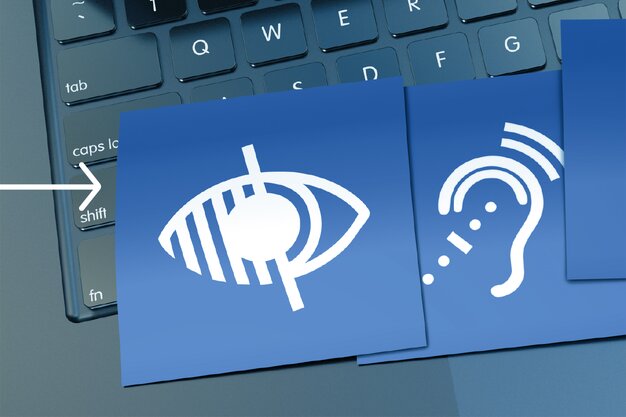About 1.7 million Dutch people have a disability. The European Accessibility Act must ensure that products and services are accessible to everyone, regardless of complex restrictions. What exactly does this law entail and what does it mean for your organization?
Developers are increasingly taking visual impairment and other disabilities into account when building websites and apps. One way of doing so is by adding code that enables screen readers – devices used by people with a visual impairment – to read text out loud. New legislation will now make such steps mandatory.
This requirement also applies to documents you share with customers: user instructions, account statements, customer terms and conditions, and more. Ensuring this accessibility can be quite the technical challenge.
What is the European Accessibility Act?
The European Accessibility Act (EAA) is a piece of legislation passed by the European Union to improve accessibility for people with disabilities across member states. Its main objective is to ensure that a wide range of products and services are accessible to all, including those with disabilities, thereby promoting their inclusion in society and increasing their independence.
Before we go into the details of the act, you are probably curious whether this law applies to your organization. Spoiler alert: that chance is very high. The EAA covers vital online services like e-commerce, banking, and transportation ticketing. In addition to government organizations, the law focuses on:
- organizations with 10 employees or more;
- or an annual turnover of 2 million euros or more.
In short, the vast majority of companies will have to comply with this legislation.
The act covers several key areas, including digital technologies (like websites, mobile apps and documents), ATMs and banking services, e-books, e-commerce, and transportation. It sets out minimum accessibility requirements that these services and products must meet. For instance, it requires that key services like banking must ensure their services are accessible to all.
More than a difficult obligation
Though the directive itself does not include any specific rules for websites and apps to follow, readers are referred to Standard EN 301 549 of the Accessible ICT Procurement Toolkit. This document itself refers to the Web Content Accessibility Guidelines 2.1 standards for further clarification. The core of these rules is that texts and images should be suitable for screen readers and can be operated with the Tab key. Video content should include closed captions.
The EAA might come across as just another difficult obligation, but it does have an upside! After all, implementing these changes means that those 1.7 million Dutch people with a disability can also purchase products or services from you. By following the guidelines for video content, your websites will also be more accessible in different situations, like playing a video on mute or watching in a crowded environment.
European Accessibility Act in the Netherlands
As is usual with European legislation, the EAA is translated into national legislation for the different member states. In the Netherlands, the EAA will be put into effect as the Implementation Act on Accessibility Regulations for Products and Services (‘Implementatiewet toegankelijkheidsvoorschriften producten en diensten’). Violation of the law may lead to the imposition of a final sum or a fine, but the details will be announced later. Six supervisory bodies have been appointed to ensure that companies comply with accessibility regulations, and are currently setting up supervision rules.
Next steps…
The new act comes into effect on June 28, 2025. That will take a little while, but it is wise to take steps now.
First of all, now is the right time to call your web developer. Do your website and apps already comply with the WCAG, the accessibility guidelines set out by the new law? Since these requirements are increasingly becoming the standard, there is a good chance that your web developer has already taken them into account. However, they may need to make some final touches.
When enabling accessibility, don't forget the documents you share with customers. Think of PDFs with user instructions, account statements or customer conditions. With the Automated Output Accessibility add-on, OpenText Output Server can properly design high-volume digital documents. The documents are transformed into accessible formats by capturing content from electronic documents, identifying tables, sections, fields and images, inserting alternate text, and applying applicable tags. That way, the documents can be navigated and read by assistive technologies.
As usual, OpenText offers practical solutions for complex issues, be they legislative, business-related or otherwise. However, the degree of success you'll achieve with OpenText is all about its implementation. We wrote about our unique “car wash” cloud implementations before. But we can also show you how OpenText Output Server works, through a tailored demo at your office. We understand your time is valuable, so our OpenText Experience Sessions typically take no longer than 2 hours.




